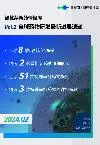CEQUA® (cyclosporine ophthalmic solution) 0.09% Phase 4 Data Showed Sustained Improvement in Dry Eye Disease Signs and Symptoms in Patients Switched From Restasis® (cyclosporine ophthalmic emulsion) 0.05%
2023-10-12
临床结果临床3期
Presentation at the American Academy of Optometry (AAOPT) 2023 showed significant improvements with CEQUA® for topical ophthalmic use in both corneal fluorescein staining (CFS) and symptom questionnaire scores starting at 4 weeks and continuing to 12 weeks
Study design mirrors real-world experience with dry eye disease, including allowing use of artificial tears and measurement of CFS in all five corneal zones
MUMBAI, India and PRINCETON, N.J., Oct. 12, 2023 /PRNewswire/ -- Sun Pharmaceutical Industries Limited (Reuters: SUN.BO, Bloomberg: SUNP IN, NSE: SUNPHARMA, BSE: 524715, "Sun Pharma" and includes its subsidiaries and/or associate companies) today announced the presentation of Phase 4 data showing that CEQUA® (cyclosporine ophthalmic solution) 0.09% induces sustained improvement in the signs and symptoms of dry eye disease (DED). CEQUA ophthalmic solution is a calcineurin inhibitor immunosuppressant indicated to increase tear production in patients with keratoconjunctivitis sicca (dry eye). In a presentation at the American Academy of Optometry (AAOPT) 2023 annual meeting in New Orleans, La., researchers reported that CEQUA elicited significant improvement in corneal fluorescein staining (CFS, a test used to detect damage to the cornea) and in modified Symptom Assessment in Dry Eye (mSANDE) scores in patients with DED whose disease was uncontrolled on Restasis® (cyclosporine ophthalmic emulsion) 0.05% therapy.1
In the 12-week Phase 4 multicenter study, twice-daily administration of CEQUA improved CFS and mSANDE scores starting at Week 4 of treatment and maintained these improvements through Week 12. CEQUA offers a high concentration of cyclosporine for ophthalmic use and is the first and only U.S. Food and Drug Administration (FDA)-approved cyclosporine treatment delivered with nanomicellar NCELL® technology, which helps to improve the bioavailability of cyclosporine, resulting in improved ocular tissue penetration.
"We were greatly encouraged to observe significant improvements in dry eye signs and symptoms as early as four weeks into treatment with CEQUA, and to see even greater improvements at eight weeks and again at 12 weeks," said lead investigator Josh Johnston, OD, FAAO, of Georgia Eye Partners in Atlanta, Ga. "Moreover, by assessing corneal fluorescein staining in all five zones of the cornea, we were able to attain a more complete characterization of corneal health than in many dry eye disease trials, which typically assess only a few corneal areas."
The study enrolled adults with DED inadequately controlled (i.e., still symptomatic and/or exhibiting disease signs) on current Restasis® therapy for at least three months, and who had a history and clinical diagnosis of DED for at least three months before screening/baseline. Patients received one drop of CEQUA in each eye twice daily for 12 weeks. Investigators assessed CFS and mSANDE scores at baseline and at Weeks 4, 8, and 12, and/or upon early discontinuation from the study. CFS was scored on a 0-4 grading scale in 0.5-point increments, with a score of 0 indicating no stain (i.e., healthy cornea) and a score of 4 reflecting a severe stain; investigators calculated a total CFS score by summing all five corneal area scores. The mSANDE questionnaire assessed frequency and severity of DED symptoms of dryness and irritation on a 0-100 scale, with 0 representing very low frequency/severity and 100 indicating very high frequency/severity.
Dr. Johnston and colleagues presented results from 124 patients in the modified intent-to-treat (mITT) population. The mean (standard deviation [SD]) age of the patients was 65.5 (11.6) years; 110 of the patients (88%) were female. The mean (SD) total CFS score was 5.7 (3.37) at baseline, and improved significantly (P <0.0001) to 4.0 (3.12) at Week 4, 2.9 (2.54) at Week 8, and 2.7 (2.36) at Week 12. Similarly, the mean (SD) mSANDE score was 67.1 (21.05) at baseline and improved significantly (P <0.0001) to 48.4 (23.31) at Week 4, 44.2 (24.28) at Week 8, and 38.3 (25.99) at Week 12.
CEQUA was generally well tolerated in the study, consistent with its established safety profile, and there were no new safety signals in the trial. Overall, 58 patients (43.3%) reported at least one treatment-emergent adverse event (AE); most AEs were mild in severity (73.8%). The most common treatment-related AEs were instillation site irritation and instillation site pain; all other treatment-related AEs occurred in fewer than 2% of patients.
"In addition to the rapid and sustained symptomatic improvement in patients with dry eye disease treated with CEQUA, this study is notable for its design, which allows for use of artificial tears, thus replicating real-world conditions as closely as possible for a controlled clinical trial," noted Brittany Mitchell, OD, Head of Medical Affairs, Ophthalmics, at Sun Pharma. "The data presented at the American Academy of Optometry meeting represent the first of a series of assessments from this trial, with results thus far consistent with the efficacy, safety, and convenient dosing of CEQUA. We look forward to sharing additional information as we continue to analyze the data from this trial."
About CEQUA®
CEQUA® (cyclosporine ophthalmic solution) 0.09% is a patented, novel, proprietary nanomicellar NCELL formulation of cyclosporine in a clear, preservative-free, aqueous solution. It is indicated to increase tear production in patients with keratoconjunctivitis sicca (dry eye), an inflammatory disease that afflicts more than 16 million people in the U.S.2 CEQUA is the first and only U.S. Food and Drug Administration (FDA)-approved cyclosporine treatment delivered with nanomicellar NCELL technology, which helps to improve the bioavailability and physicochemical stability of cyclosporine, resulting in improved ocular tissue penetration.
CEQUA is dosed twice daily and is available as a single-use vial. In a multicentered, randomized, double-masked, vehicle-controlled Phase 3 confirmatory study involving 744 patients with dry eye, investigators observed clinically and statistically significant improvements in tear production and ocular surface integrity in patients treated with CEQUA, compared to vehicle. CEQUA treatment was well tolerated in the Phase 3 trial; treatment-emergent adverse events were primarily mild in intensity. In a prior Phase 2b/3 clinical trial with 455 patients, CEQUA demonstrated clinically and statistically significant increases in tear production (16.8% of patients with an increase of ≥10 mm in Schirmer's score from baseline after 84 days of treatment, versus 8.6% for vehicle; p<0.01) and was well tolerated by the study population. Additionally, several key secondary endpoints showed statistically significant improvements compared to vehicle. From both clinical trials, the most common adverse reaction following the use of cyclosporine ophthalmic solution 0.09% was instillation site pain (22%) and conjunctival hyperemia (6%). Other adverse reactions reported in 1% to 5% of the patients were eye irritation, blepharitis, urinary tract infection, headache, and bronchitis.
INDICATIONS AND USAGE
CEQUA® (cyclosporine ophthalmic solution) 0.09% is a calcineurin inhibitor immunosuppressant indicated to increase tear production in patients with keratoconjunctivitis sicca (dry eye).
IMPORTANT SAFETY INFORMATION
WARNINGS AND PRECAUTIONS
Potential for Eye Injury and Contamination: To avoid the potential for eye injury and contamination, advise patients not to touch the vial tip to the eye or other surfaces.
Use with Contact Lenses: CEQUA should not be administered while wearing contact lenses. If contact lenses are worn, they should be removed prior to administration of the solution. Lenses may be reinserted 15 minutes following administration of CEQUA ophthalmic solution.
ADVERSE REACTIONS
The most common adverse reactions reported in greater than 5% of patients were pain on instillation of drops (22%) and conjunctival hyperemia (6%). Other adverse reactions reported in 1% to 5% of patients were blepharitis, eye irritation, headache, and urinary tract infection.
Please click for Full Prescribing Information & for more information visit CEQUAPRO.com
About Dry Eye Disease
Dry eye is a burdensome, chronic disease affecting millions of patients around the world, with a significant population, greater than 16 million patients, present in the United States.2
Dry eye disease, as defined by the National Eye Institute (NEI, a division of the U.S. National Institutes of Health), occurs when the quantity and/or quality of tears fails to keep the surface of the eye properly lubricated. The disease causes a scratchy sensation or a feeling that something is in the eye. Other symptoms include stinging or burning, episodes of excess tearing following periods of stress, discharge, pain, and redness in the eye. The risk of developing dry eye increases with advancing age and is more common in women than in men.
Disclaimer:
Statements in this "Document" describing the Company's objectives, projections, estimates, expectations, plans or predictions or industry conditions or events may be "forward looking statements" within the meaning of applicable securities laws and regulations. Actual results, performance or achievements could differ materially from those expressed or implied.
About Sun Ophthalmics
Backed by Sun Pharma's global expertise in R&D, Sun Ophthalmics (the branded ophthalmic division of Sun Pharma's wholly owned subsidiary) is leading the way through the development of innovative products and in partnership with eye care professionals. In addition to CEQUA® (cyclosporine ophthalmic solution) 0.09%, Sun Ophthalmics markets BromSite® (bromfenac ophthalmic solution) 0.075% and XELPROS® (latanoprost ophthalmic solution) 0.005% in the U.S. Sun Ophthalmics' dedicated team is focused solely on the needs of eye care professionals, offering timely, knowledgeable support at every turn. The company strives to deliver products built on unique platforms that integrate seamlessly into the eye care practice, helping eye care professionals to continue providing quality medicine. Discover a brighter future in eye care at .
About Sun Pharmaceutical Industries Limited (CIN - L24230GJ1993PLC019050)
Sun Pharma is the world's fourth largest specialty generics company with presence in Specialty, Generics and Consumer Healthcare products. It is the largest pharmaceutical company in India, and is a leading generic company in the US as well as Global Emerging Markets. Sun's high growth Global Specialty portfolio spans innovative products in dermatology, ophthalmology, and onco-dermatology and accounts for over 16% of company sales. The company's vertically integrated operations deliver high-quality medicines, trusted by physicians and consumers in over 100 countries. Its manufacturing facilities are spread across six continents. Sun Pharma is proud of its multi-cultural workforce drawn from over 50 nations. For further information, please visit and follow us on Twitter @SunPharma_Live
References:
Johnston, J. Effect of OTX-101 0.09% on corneal staining and SANDE scores in patients with dry eye disease uncontrolled on cyclosporine ophthalmic emulsion 0.05%. Abstract presented at American Academy of Optometry 2023; October 12, 2023; New Orleans, LA.
New study focuses on scope of dry eye disease in the U.S. American Optometric Association; 2017. Available at: . Accessed September 10, 2019
© 2023 Sun Pharmaceutical Industries, Inc. All trademarks are the property of their respective owners.
Company Codes: Bombay:524715, India:EQSUNPHARMA
更多内容,请访问原始网站
文中所述内容并不反映新药情报库及其所属公司任何意见及观点,如有版权侵扰或错误之处,请及时联系我们,我们会在24小时内配合处理。
适应症
靶点
立即开始免费试用!
智慧芽新药情报库是智慧芽专为生命科学人士构建的基于AI的创新药情报平台,助您全方位提升您的研发与决策效率。
立即开始数据试用!
智慧芽新药库数据也通过智慧芽数据服务平台,以API或者数据包形式对外开放,助您更加充分利用智慧芽新药情报信息。





